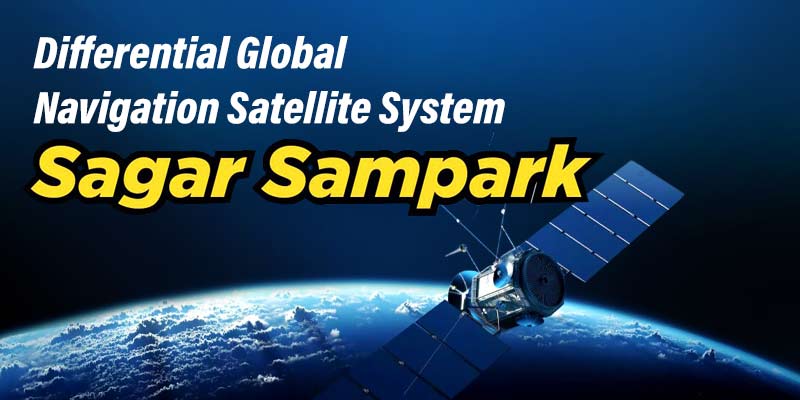- India
- Jul 13
Govt launches Sagar Sampark for marine navigation
Union Minister of Ports, Shipping and Waterways Sarbananda Sonowal inaugurated an indigenous Differential Global Navigation Satellite System (DGNSS) called Sagar Sampark.
The launch of Sagar Sampark at six locations under Directorate General of Lighthouses and Lightships (DGLL), will enhance the capability of the DGLL in the field of Radio Aids to Marine Navigation.
What is Sagar Sampark?
• A Global Navigation Satellite System (GNSS) is a space-based positioning, navigation and time distribution system designed for worldwide use.
• GNSS refers to a constellation of satellites providing signals from space that transmit positioning and timing data to GNSS receivers to have global coverage. The receivers then use this data to determine the location.
• Differential GNSS (DGNSS) is a means of improving the accuracy of GNSS and providing integrity monitoring to the user.
• DGNSS involves having reference stations at precisely known locations that provide real-time corrections and integrity information for GNSS signals. DGNSS systems provide shore‐to-ship services.
• Sagar Sampark-DGNSS is an enhancement system that corrects the errors and inaccuracies in the Global Navigation Satellite System (GNSS) and provides more accurate positioning information.
• It will help mariners in safe navigation and will reduce the risk of collisions, groundings, and accidents in the port and harbour areas.
• This will lead to safe and efficient movement of vessels.
• It is an important radio aid to navigation towards fulfilment of international obligations of International Maritime Organisation (IMO), Safety of Life at Sea (SOLAS) and International Association of Marine Aids to Navigation and Lighthouse Authorities (IALA).
• After recapitalisation with multiple satellite constellations like GPS and Global Navigation Satellite System (GLONASS), DGNSS further increases the availability and redundancy as per international standards and helps the mariners to improve their positioning.
• The DGNSS significantly improves the accuracy of GPS positioning, reducing errors caused by the atmospheric inferences, satellite clock drift and other factors.
• This is achieved with the help of modern state of art technology receivers and latest software. The error correction accuracy has been improved from 5 to 10 meters to less than 5 meters for 100 Nautical Miles from Indian coastlines.
Directorate General of Lighthouses and Lightships
• The Directorate General of Lighthouses and Lightships (DGLL) establishes and maintains Aids to Marine Navigation along the coastline of India as per Lighthouse Act, 1927.
• The said Act has been repealed and replaced by the newly enacted Marine Aids to Navigation Act, 2021.
• It provides General Aids to Marine Navigation along the Indian coast.
• The DGLL is headed by the Director General at headquarters situated at Noida and has nine directorates at Gandhidham, Jamnagar, Mumbai, Goa, Cochin, Chennai, Visakhapatnam, Kolkata and Port Blair.
International Association of Marine Aids to Navigation and Lighthouse Authorities (IALA)
• The International Association of Marine Aids to Navigation and Lighthouse Authorities (IALA), having its headquarters at St. Germain en Laye (France), is an association bringing together the organisations responsible for provision and maintenance of Aids to Marine Navigation.
• The aim of the association is to encourage continuous improvement of Aids to Marine Navigation.
• The IALA is the only world body for Aids to Marine Navigation having more than 100-national members responsible for management of Aids to Navigation within their countries.
• The Directorate General of Lighthouses and Lightships represents India.
• The IALA promotes cooperation and assistance between various member countries by collection and dissemination of information so as to take up development of multipurpose navigational systems for enhancing maritime safety.
Manorama Yearbook app is now available on Google Play Store and iOS App Store


